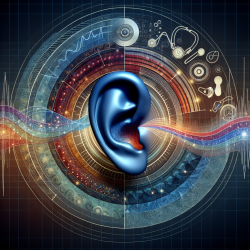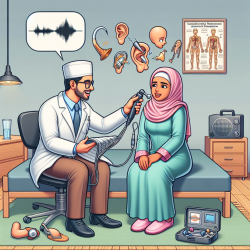Advancements in auditory health and hearing assessment techniques have seen significant strides with the advent of distortion product emissions (DPE) research. This innovative approach not only deepens our understanding of cochlear physiology but also opens new avenues for clinical applications in diagnosing and monitoring hearing sensitivity and health. Drawing insights from the groundbreaking study "Developing Distortion Product Emission Measurements for Clinical Applications" by Anya Lee, Barry Kimberley, and David Brown, this blog explores how practitioners can enhance their skills and contribute to advancing auditory health care.
Distortion product emissions have emerged as a critical tool in audiology, providing non-invasive, objective measures of cochlear function. The study by Lee, Kimberley, and Brown delves into the potential clinical applications of DPEs, particularly in predicting pure tone hearing sensitivity and addressing the challenges in achieving this goal. The research highlights the importance of overcoming factors that have previously confounded correlational studies, such as noise rejection and signal analysis, to harness the full potential of DPEs in clinical settings.
Understanding Distortion Product Emissions
At the heart of this research is the concept of distortion product emissions, which are sounds generated by the cochlea in response to two simultaneous pure tone stimuli. These emissions reflect the cochlea's active processing of sound and are indicative of outer hair cell function, a crucial element in our auditory system. The study outlines the technical considerations necessary for accurate DPE measurement and analysis, emphasizing the importance of factors like noise rejection and the analysis of signal quality.
Clinical Applications and Benefits
The clinical implications of DPEs are vast, offering a non-invasive method to assess cochlear health. The study presents various audiometric configurations and associated DPE recordings, illustrating how DPEs can be used to predict hearing sensitivity across different frequencies. This capability is particularly beneficial for populations where traditional behavioral audiometry may not be feasible, such as in newborns, individuals with disabilities, or cases where the reliability of behavioral responses is a concern.
Advancing Practice with DPE Research
For practitioners looking to advance their skills and knowledge in audiology, integrating DPE measurements into clinical practice offers a promising avenue. The study encourages further research and exploration into the optimal parameters for eliciting DPEs, the analysis of DPE features, and the development of normative data across different populations. By staying abreast of advancements in DPE research and technology, practitioners can enhance their diagnostic capabilities and contribute to the broader goal of improving auditory health care.
Challenges and Future Directions
Despite the promising applications of DPEs, the study acknowledges the challenges in standardizing measurement procedures and interpreting results. The variability in DPE responses due to factors such as age, hearing loss severity, and technical aspects of measurement calls for ongoing research to refine DPE assessment methodologies. Future studies aimed at establishing a clearer relationship between DPE thresholds and pure tone audiometry, as well as exploring the effects of different cochlear pathologies on DPEs, will be crucial in maximizing the clinical utility of this tool.
In conclusion, the research by Lee, Kimberley, and Brown offers valuable insights into the potential of distortion product emissions in advancing auditory health care. By understanding the principles, challenges, and applications of DPEs, practitioners can enhance their diagnostic approaches and contribute to the early detection and management of hearing impairments. The journey toward fully harnessing the clinical potential of DPEs is ongoing, and continued research and collaboration among audiologists will be key to achieving this goal.
For those interested in delving deeper into the intricacies of distortion product emissions and their clinical applications, reading the original research paper is highly recommended. To read the original research paper, please follow this link: Developing Distortion Product Emission Measurements for Clinical Applications.










